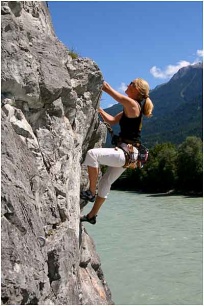TNC Implementation
Organise a cooperation partnership
What you have already done at this stage:
- You have confirmed your partnership;
- You have formalised the content and development of the foreseen project in a TNC application for funding, a Memorandum of Understanding, etc; and
- You have found and brought together the required resources: human, technical, financial, etc.
Identifying the project coordinator
Good management of a cooperation project is essential for its success and this should be ensured by the project coordinator. One of the partner structures should be clearly identified as the overall project coordinator. Within this lead partner structure, one person should be in overall charge of the implementation, animation, monitoring and management of the project.
Various approaches exist for TNC project coordination. These include:
- A single project coordinator operational throughout the full project lifespan. This person may be one of the partners, chosen by the others, who accepts responsibility for the general management and coordination of the cooperation work programme;
- A single project coordinator, reporting to/supported by national steering groups (important for projects involving a larger number of partners); or
- Shared / rotating coordination. Here the partners take turns to manage and coordinate different phases or aspects of the cooperation work programme, according to predefined elements. In this case, good coordination must be ensured between the different coordinators. This may enable a certain acquisition of skills in terms of cooperation project management and coordination, notably for the less experienced partners.
The choice of coordination approach will depend on the capacity of the partners, in terms of their resources for the coordination tasks (human and financial resources), and on the wish of the partners, plus also on the type of project.
Coordinating a project requires important competencies! (see the example from Austria)
A ‘good’ cooperation coordinator will preferably have:
- Language skills to communicate directly with the partners;
- Previous experience in cooperation project management or have worked with
- external partners;
- Good project management capacities; and
- Good communication, diplomacy and negotiation skills.
Setting up the decision making process
Decision-making processes should be clearly defined and described in a document validated by all partners (in the application form and in the cooperation agreement) in order to ensure transparency and to avoid any misunderstanding. This document should also refer to relevant legally binding conditions set by the Managing Authority in relation to the RDP funding.
You may chose to set up a decision making committee (executive committee) grouping representatives of the different partners, which will be the decision making structure for the whole project. Decisions can then be made either informally or by vote with pre-defined rules governing representation. This solution is compatible with both a unique coordinator and with a system of shared or rotating coordination. Yet, since it implies the creation of another structure, it may be reserved only for the more complex partnerships (i.e. the ones involving a higher number of partners).






